 Biotope
Biotope
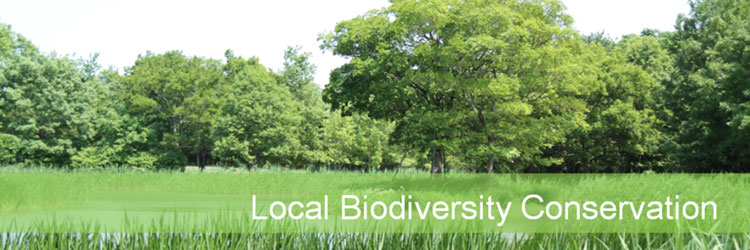
In accordance with our theme of coexistence with nature, Advantest has established one of the largest biotopes to be created by a company in Japan, at our Gunma R&D Center, aiming to bring back to life the traditional rural landscape of the Kanto Plain.
Focusing on ponds, wetlands and streams, we have planted aquatic plants and trees that blend with the surrounding natural environment, aiming to form a network with that environment. It has grown into an ecosystem supporting diverse species of insects, birds and so forth.
The Advantest biotope is used for environmental education, enabling employees to learn about the importance of the global environment, and also as a place for communication with the local community.
* Biotope: The word comes from the Greek words "bio" (living organisms) and "tope" (a location).
Biotope Quarterly
-
- 2018/9/27
- Autumn 2018: Dragonflies
-
- 2018/4/17
- Spring 2018: Flowers of Spring
-
- 2017/12/8
- Autumn 2017: Acorns
-
- 2017/9/12
- Summer 2017: Butterflies
-
- 2017/4/21
- Spring 2017: Disturbance
-
- 2017/1/31
- Winter 2017: Deciduous Trees
-
- 2016/11/18
- Autumn 2016: Thoroughwort and Autumn Flowers
-
- 2016/07/22
- Summer 2016: Aquatic Plants
-
- 2016/03/31
- Winter 2016: The Birds of Winter
Biotope description
| Location | 336-1, Ohwa, Meiwa-machi, Ora-gun, Gunma Within the Gunma R&D Center site |
|---|---|
| Area | 17,000m2 (100m x 170m) |
| Vegetation |
|
* Ecotone: An environmental transition zone bordering on a different environment, such as the water's edge, grasslands, woodlands etc.
Artifical insect habitats
We have put in place artifical insect habitats* within the biotope area, to support a variety of living creatures, and have kept track of how they are being used.
* Artifical insect habitats: piles of logs, stones etc.
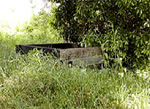
Wooden artifical insect habitat
The surface is dry but it is moist inside, so reptiles and insects live and lay eggs there.
- <Species observed>
- Reptiles: snakes (eggs), Japanese grass lizard etc.
Insects: small stag beetle (larvae), assassin bug, seven-spotted lady beetle, etc.
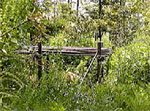
Bamboo artifical insect habitat
Bundles of cut bamboo sticks were put on the ground and above ground. Insects live in the bamboo and in the gap between the bundles.
- <Species observed>
- Insects: a kind of wasp (Isodontia nigella), solitary wasp (Anterhynchium flavomarginatum micado), type of earwig (Carcinophora marginalis), etc.
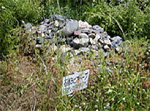
Stone artifical insect habitat
A house in which large and small stones are arranged in a pile. Insects live under and in the gaps between the stones.
- <Species observed>
- Insects: Enma cricket, Loxoblemmus campestris, Panagaeus japonicus Chaudoir, etc.
Advantest’s Biotope Certified as a “Kanto Water & Greenery Network Stronghold”
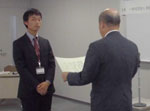
Presentation Ceremony
In October 2015, Advantest’s biotope was certified as one of the 100 “Kanto Water & Greenery Network Strongholds” curated by the Kanto Regional Management Service Association and the Ecosystem Conservation Society of Japan. The two groups select and support important locations in the Kanto region that contribute to preserving and restoring biodiversity. Our biotope was chosen for inclusion based on our success in establishing a stable ecosystem, the scale of the project, our management structure, and the high level of academic knowledge that goes into the biotope's maintenance.
Birdpia
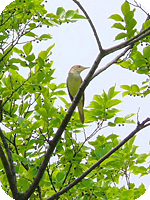
Acrocephalus arundinaceus
inhabiting in the biotope
October 15th, 2011, the Gunma R&D Center (located in Meiwa-machi, Ora-gun, Gunma Prefecture) registered itself with the “Birdpia” activities organized by the Japanese Society for Preservation of Birds.
According to the Society, Birdpia is a green space for wild birds to live in a comfortable environment. The purpose of the Birdpia is to help people understand the importance of cohabitation with nature.
The facility of the Gunma R&D is surrounded by rich arboriculture, which functions as a habitat of wild birds. The property also has an extensive biotope with an area of approximately 17,000m2. Many plants and animals, including the Intermediate Egret (Ardea intermedia) listed as a Near Threatened bird in the Red List of the Ministry of the Environment in Japan, live in this biotope. When winter arrives, more than 50 wild ducks appear in the biotope and delight the eyes of our employees, as well as the primary school children and the neighborhood residents who visit the biotope.
